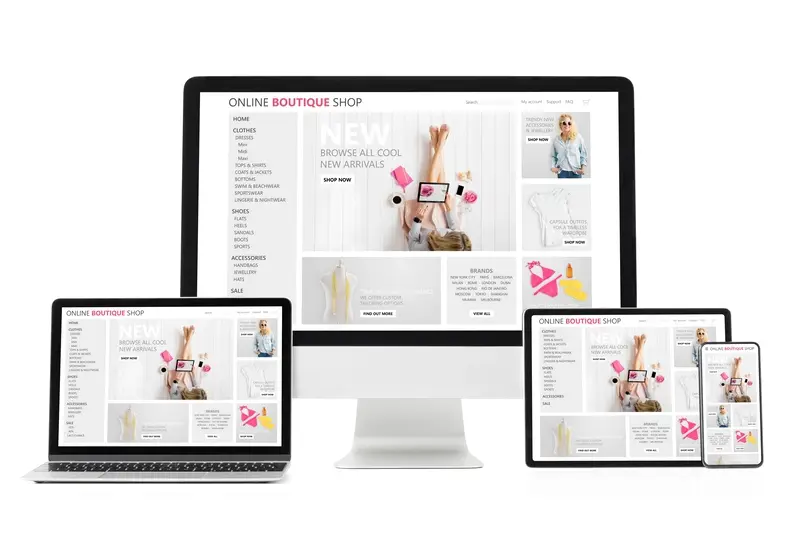What Is Mobile App Development And How Does It Work?
Every single day, people around the world download over 250,000 mobile apps—that's nearly three apps every second. Yet most people have absolutely no idea how these digital tools that we rely on actually come to life. Mobile app development is the process of creating software applications that run on smartphones and tablets, but there's so much more to it than just writing some code and hoping for the best.
The journey from a simple idea to a fully functioning app in your pocket involves multiple stages, different types of technology, and careful planning. Whether you're curious about how your favourite social media app was built or you're considering creating your own app, understanding mobile app development helps you appreciate the complexity behind these seemingly simple tools we use every day.
The best mobile apps solve real problems for real people, but getting there requires understanding both the technical and human sides of development
Throughout this guide, we'll explore what mobile apps actually are, the different ways they can be built, and walk through each step of the development process. You'll discover the programming languages developers use, how apps get tested before launch, and what it takes to get an app published in the major app stores. By the end, you'll have a clear picture of how apps are made and what mobile app development really involves.
What Mobile Apps Actually Are
Mobile apps are software programmes designed to run on smartphones and tablets. They're basically computer programmes that have been specially built for mobile devices—which means they work with touchscreens, can access your camera, know where you are through GPS, and fit perfectly on smaller screens.
You probably use dozens of them every day without thinking about it. Instagram, WhatsApp, Spotify, your banking app, even the calculator on your phone—they're all mobile apps. Each one is a self-contained programme that does something specific, whether that's letting you chat with friends, play games, or check the weather.
Apps vs Websites on Your Phone
Now here's where it gets a bit confusing for some people. When you open Safari or Chrome on your phone and visit a website, that's not an app—that's just a website being displayed on your mobile browser. A proper mobile app is something you download from the App Store or Google Play Store and install directly onto your device.
The big difference? Apps live on your phone and can work even when you don't have internet (depending on what they do, of course). They're also much faster and smoother to use than websites because they're built specifically for your device.
Native vs Web vs Hybrid Apps Explained
When I'm explaining app types to clients, I often see their eyes glaze over when the technical jargon starts flying. But here's the thing—understanding the difference between native, web, and hybrid apps isn't rocket science, and it can save you thousands of pounds in development costs.
Native apps are built specifically for one platform, like iOS or Android. They're downloaded from app stores and live on your phone. Think Instagram or WhatsApp—they're fast, they work offline, and they can access all your phone's features like the camera and GPS. The downside? You need separate versions for iPhone and Android, which means double the work and double the cost.
Web Apps: The Browser-Based Option
Web apps run in your phone's browser rather than being downloaded. They're basically websites that look and feel like apps. They're cheaper to build because one version works on all devices, but they can't do everything a native app can—no push notifications, limited offline access, and they won't appear in app stores.
Hybrid Apps: The Middle Ground
Hybrid apps try to give you the best of both worlds. They're built using web technologies but wrapped in a native shell so they can be downloaded from app stores. They're faster to develop than native apps but might not perform quite as smoothly.
Choose native if performance and user experience are your top priorities, web if you're on a tight budget, and hybrid if you want app store presence without the full native development cost.
The Mobile App Development Process Step-by-Step
Right, let's break down how apps actually get built—because I promise it's not as mysterious as it might seem! After years of working with clients who thought apps just magically appeared overnight, I've learnt that explaining the process clearly saves everyone a lot of confusion later on.
The Main Development Stages
Every app goes through the same basic journey, whether it's a simple calculator or the next big social media platform. We start with planning and research—this is where we figure out what the app needs to do and who will use it. Then comes the design phase where we create wireframes and mockups; think of these as the blueprints that show how everything will look and work.
Next up is the actual coding—this is where developers write all the instructions that make your app function. We build the front-end (what users see) and the back-end (the behind-the-scenes stuff like databases). Testing happens throughout, not just at the end, because catching problems early saves time and money.
- Planning and research
- Design and wireframing
- Development and coding
- Testing and debugging
- Deployment and launch
The whole process typically takes anywhere from three to nine months, depending on complexity. Simple apps might be quicker, but anything with user accounts, payments, or complex features will need more time.
Programming Languages and Tools Used
Right, let's talk about the actual building blocks—the programming languages and tools that bring mobile apps to life. I've worked with dozens of different tech stacks over the years, and honestly, the choice often comes down to what type of app you're building and who's going to use it.
Native App Development
For iOS apps, you'll be working with Swift or Objective-C (though Swift has pretty much taken over now). Swift is Apple's modern language—it's clean, fast, and much easier to read than its predecessor. Android apps are built using Java or Kotlin, with Kotlin becoming Google's preferred choice because it fixes many of Java's quirks whilst remaining fully compatible.
Cross-Platform Solutions
Then there's the cross-platform world. React Native lets you write JavaScript code that works on both iOS and Android—brilliant for startups wanting to move quickly. Flutter, Google's framework, uses Dart and creates incredibly smooth apps that feel truly native.
The best programming language is the one your development team knows well and can maintain long-term
Don't forget the development environments: Xcode for iOS, Android Studio for Android development. These aren't just text editors—they're complete toolkits with simulators, debugging tools, and performance monitors. The tools have come such a long way; what used to take hours of manual testing now happens automatically.
Testing Your App Before Launch
Right, so you've built your app and you're itching to get it out there—I get it, the excitement is real! But here's where I see so many developers (seasoned ones included) make a costly mistake: they skip proper testing. And trust me, I've learnt this the hard way more times than I care to admit.
Types of Testing You Can't Skip
There are several types of testing you need to do before your app sees the light of day. Functional testing checks that everything works as it should—buttons do what they're supposed to, forms submit properly, that sort of thing. Then there's usability testing, which is where you get real people to use your app and watch them struggle (or hopefully not struggle) through it.
Performance testing is huge too; nobody wants an app that crashes or takes forever to load. I always test on older devices as well as newer ones because not everyone has the latest iPhone or Samsung Galaxy.
Beta Testing Is Your Best Friend
Beta testing is where you release your app to a small group of users before the big launch. These people will find bugs you never knew existed—and they'll use your app in ways you never imagined. Both Apple and Google provide beta testing tools through their app stores, making this process much easier than it used to be.
Publishing Apps to App Stores
Right, you've built your app, tested it thoroughly, and now comes the moment of truth—getting it into people's hands. Publishing to app stores isn't quite as simple as clicking upload and waiting for downloads to roll in. Both Apple's App Store and Google Play Store have their own approval processes that can take anywhere from a few hours to several days.
For the App Store, you'll need an Apple Developer account which costs £79 per year. Google Play is cheaper at a one-time fee of around £20. Once you've got your developer accounts sorted, you'll need to prepare your app listing—screenshots, descriptions, keywords, and ratings information. Apple tends to be stricter with their review process; they'll check your app meets their design guidelines and doesn't violate any policies.
Getting Ready for Submission
Before hitting submit, make sure you've got high-quality screenshots showing your app in action, a compelling description that explains what your app does, and the right keywords so people can find it. You'll also need to set your pricing—free or paid—and choose which countries you want to distribute in.
Always test your app on actual devices before submitting, not just simulators. Real-world testing catches issues that can cause rejections and saves you time in the long run.
Conclusion
Right then, we've covered quite a bit of ground here—from understanding what mobile apps actually are to getting them published on the app stores. Mobile app development isn't rocket science, but it does require careful planning and the right approach for your specific needs.
The biggest decision you'll face is choosing between native, web, or hybrid development. Native apps give you the best performance and user experience, but they cost more and take longer to build. Web apps are cheaper and faster to develop but can't access all the phone's features. Hybrid apps sit somewhere in the middle—they're a good compromise for many projects.
Don't forget that development is just one part of the puzzle. Testing your app properly before launch can save you from embarrassing bugs and negative reviews. And publishing to the app stores? Well, that's got its own set of rules and requirements that you'll need to follow carefully.
The key thing to remember is that successful mobile app development starts with understanding your users and what problem you're solving for them. Get that right, choose the appropriate development approach, and follow a structured process—you'll be well on your way to launching an app that people actually want to use.
Share this
Subscribe To Our Learning Centre
You May Also Like
These Related Guides

What's The Difference Between Traditional Development And DevOps For Apps?

Why New App Developers Often Underestimate Development Complexity



